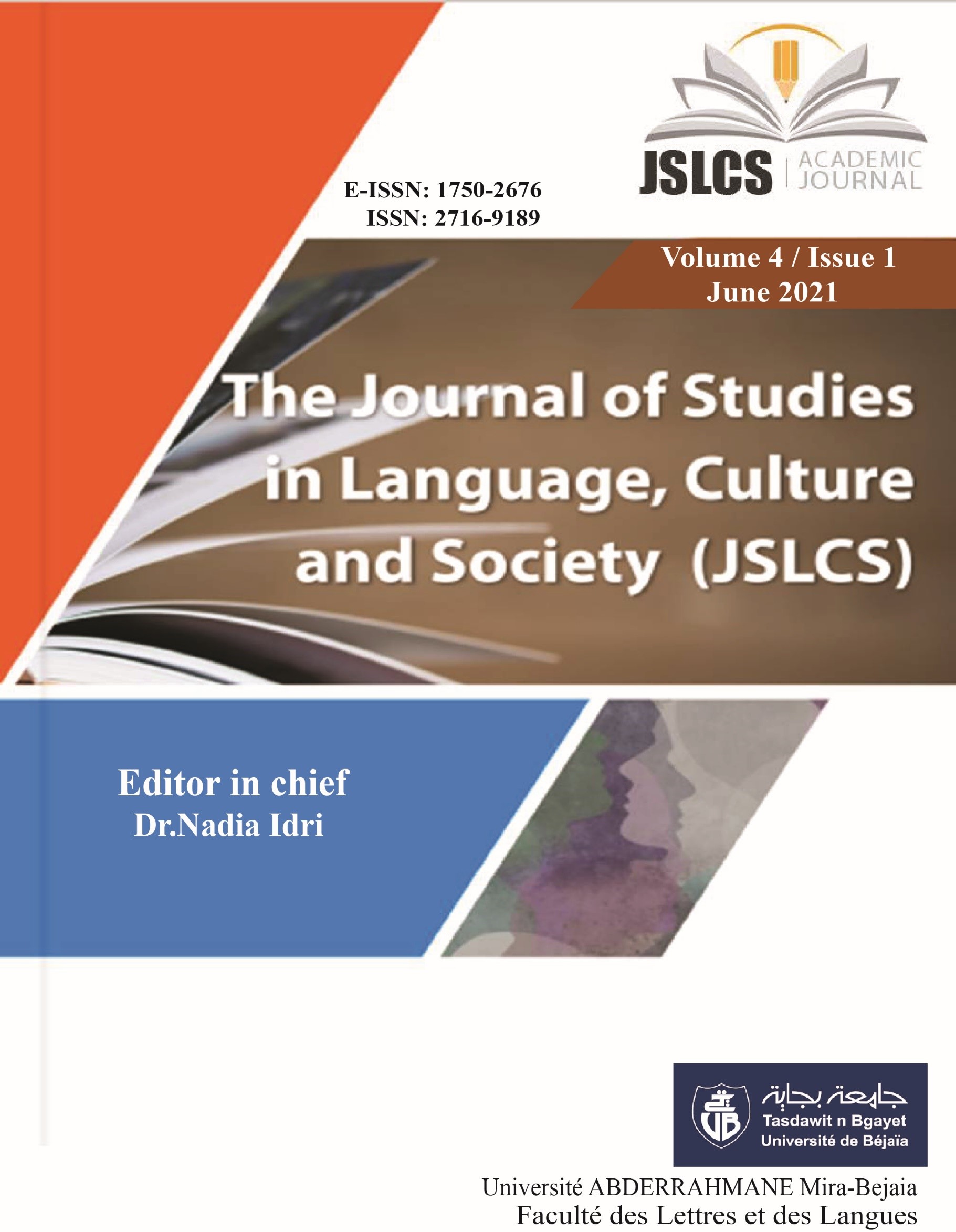Investigating The Effectiveness Of Digital Storytelling In Developing Algerian Learners’ Emotional Intelligence: A Case Study Of Third Year Lmd Students Of English At Abdelhamid Ibn Badis University
Keywords:
Digital storytelling, emotional intelligence, social-emotional learningAbstract
Digital storytelling (henceforward DST) refers to the idea of mixing the traditional art of storytelling with a variety of technological and digital devices. It is one of the most effective teaching and learning techniques used by teachers to promote social-emotional learning atmosphere. The proponents of DST believe that this technique can enhance students’ engagement, achievement and motivation. In this respect, this instructional innovation has revolutionized the traditional educational practices with its crucial role in developing learners’ competencies, especially emotional intelligence (henceforward EI). This research paper investigates the effectiveness of using digital storytelling, in the department of English language at Abdelhamid Ibn Badis University in Mostaganem, Algeria. It also examines the effects of this innovative technique on developing English as foreign language (henceforward EFL) learners’ emotional intelligence. We employed a mixed-method design to cover the principal elements and queries of the research. We conducted an experiment that lasted for four weeks, classroom observation and an emotional intelligence test for learners. The target population consisted of 44 third year bachelor students. They belonged to group one and group five at the University of Mostaganem. They were randomly selected to test the effectiveness of DST in developing their emotional intelligence. The results revealed a significant development the emotional intelligence of learners due to DST project.
References
Alrutz, M. (2014). Digital storytelling, applied theatre, & youth: Performing possibility. Routledge.
Anaptys, The Development Practice (2013). Emotional intelligence questionnaire.
https://www.crcc.nz/zh-hans/cmis/browser?id=acd4b823-46d8-43cd-8a87cbff80bd1b91%3B1.0
Bán, D., & Nagy, B. (2016). Digital storytelling in practice: Training manual for digital storytelling workshops. http://idigstories.eu/wp-
content/uploads/2016/09/Digital_Storytelling_in_Practice.pdf
Banaszewski, T. M. (2005). Digital storytelling: Supporting digital literacy in grades 4-12. (Unpublished master thesis, Georgia Institute of Technology, Atlanta, USA). Georgia Tech Theses and Dissertations.
Cox, J. D. (2011). Emotional Intelligence and its role in collaboration. Proceedings of ASBBS 18(1), 435-445.
Darling-Hammond, L., Barron, B., Pearson, P. D., Schoenfeld, A. H., Stage, E. K., Zimmerman, T. D., Cervetti, G. N., & Tilson, J. L. (2008). Powerful learning: What we know about teaching for understanding. Jossey-Bass.
Felicia, P. (Ed.). (2011). Handbook of research on improving learning and motivation through educational games: Multidisciplinary approaches: Multidisciplinary approaches. iGi Global.
Incikabi, L. (2015). Teaching History of Mathematics through Digital Stories: A Technology Integration Model. In Keengwe, J. (Ed.), Handbook of Research on Educational Technology Integration and Active Learning (pp. 162-176). IGI Global. http://doi:10.4018/978-1-4666-8363-1.ch008.
Lambert, J. (2002). Digital storytelling: Capturing lives, creating community. Routledge.
Miller, C. H. (2008). Digital storytelling: A re tor’s gui e to intertive entert inment (2nd ed.). Focal Press/Elsevier.
Pieterse, G., & Quilling, R. (2011). The impact of digital story-telling on trait emotional intelligence (EI) amongst adolescents in South Africa – a case study. Procedia - Social and Behavioral Sciences, 28, 156-163. http://doi.org/10.1016/j.sbspro.2011.11.031
Robin, B. R. (2006). The educational uses of digital storytelling. In C. Crawford, R. Carlsen,
K. McFerrin, J. Price, R. Weber, & D. Willis (Eds.), Proceedings of SITE 2006Society for Information Technology & Teacher Education International
Conference (pp. 709-716). Association for the Advancement of Computing in Education (AACE). https://www.learntechlib.org/primary/p/22129/
Robin, B. R. (2008). Digital storytelling: A powerful technology tool for the 21st century classroom. Theory into Practice, 47(3), 220-228. https://doi.org/10.1080/00405840802153916
Robin, B. R., & Pierson, M. E. (2005). A multilevel approach to using digital storytelling in the classroom. In C. Crawford et al. (Eds.), Proceedings of Society for Information Technology & Teacher Education International Conference (pp. 708-716). AACE. https://www.learntechlib.org/primary/p/19091/
Verdugo, D. R. & Belmonte, I. A. (2007). Using digital stories to improve listening comprehension with Spanish young learners of English. Language Learning and Technology, 11(1), 87-101. http://128.171.57.22/bitstream/10125/44090/11_01_ramirez.pdf
Walters L. M., Green M. R., Walters T. N., & Wang L. (2015). The examined life: Using digital stories to develop the reflective capabilities of preservice teachers about culture and diversity. In Li Y., Hammer J. (Eds.), Teaching at work (pp. 211-233). Brill | Sense. https://brill.com/view/book/edcoll/9789463000826/BP000012.xml








